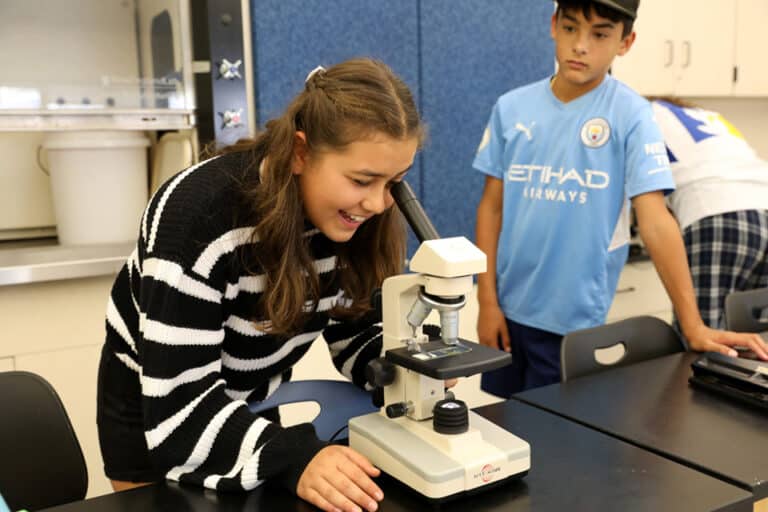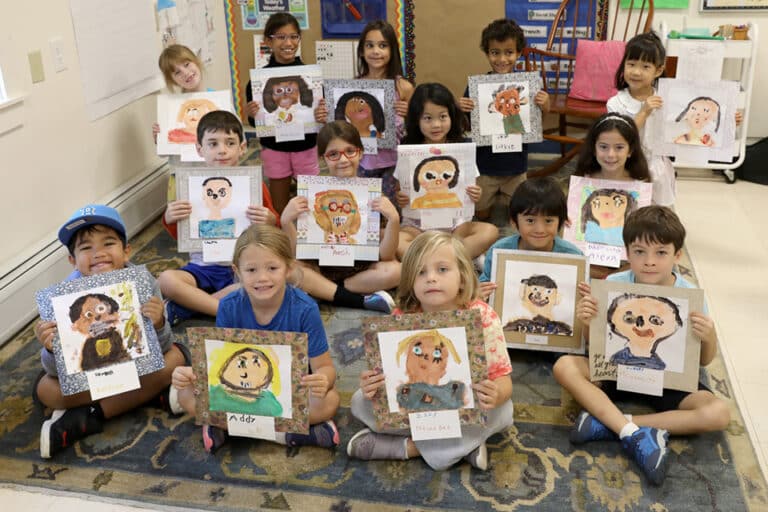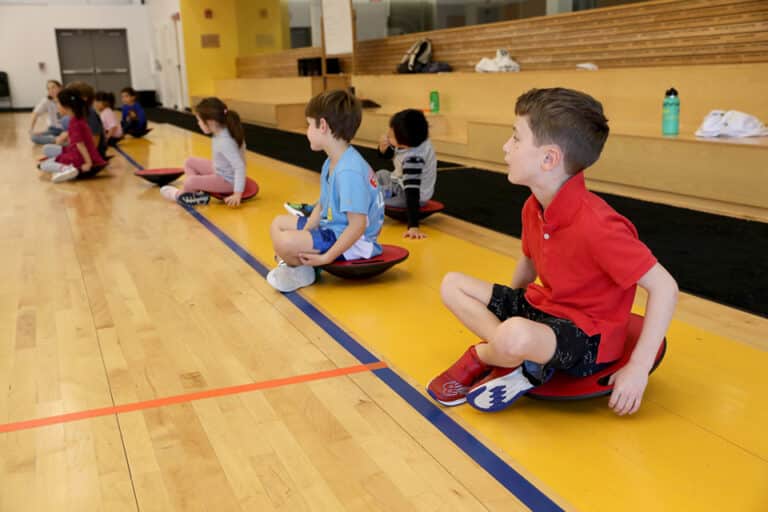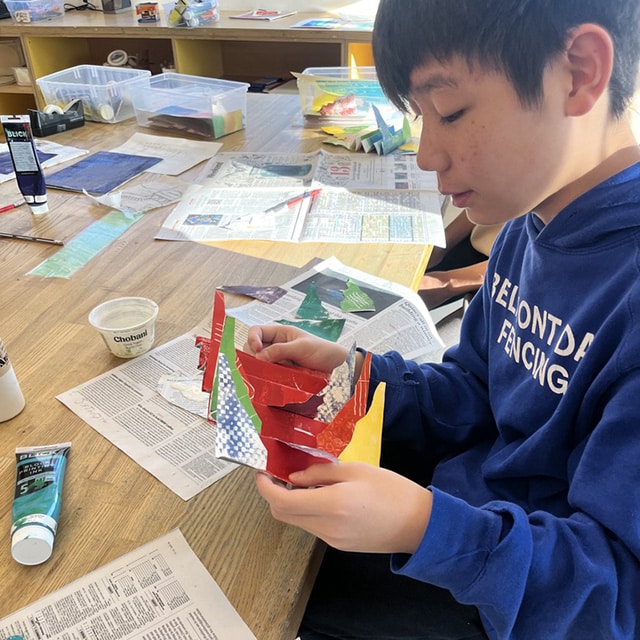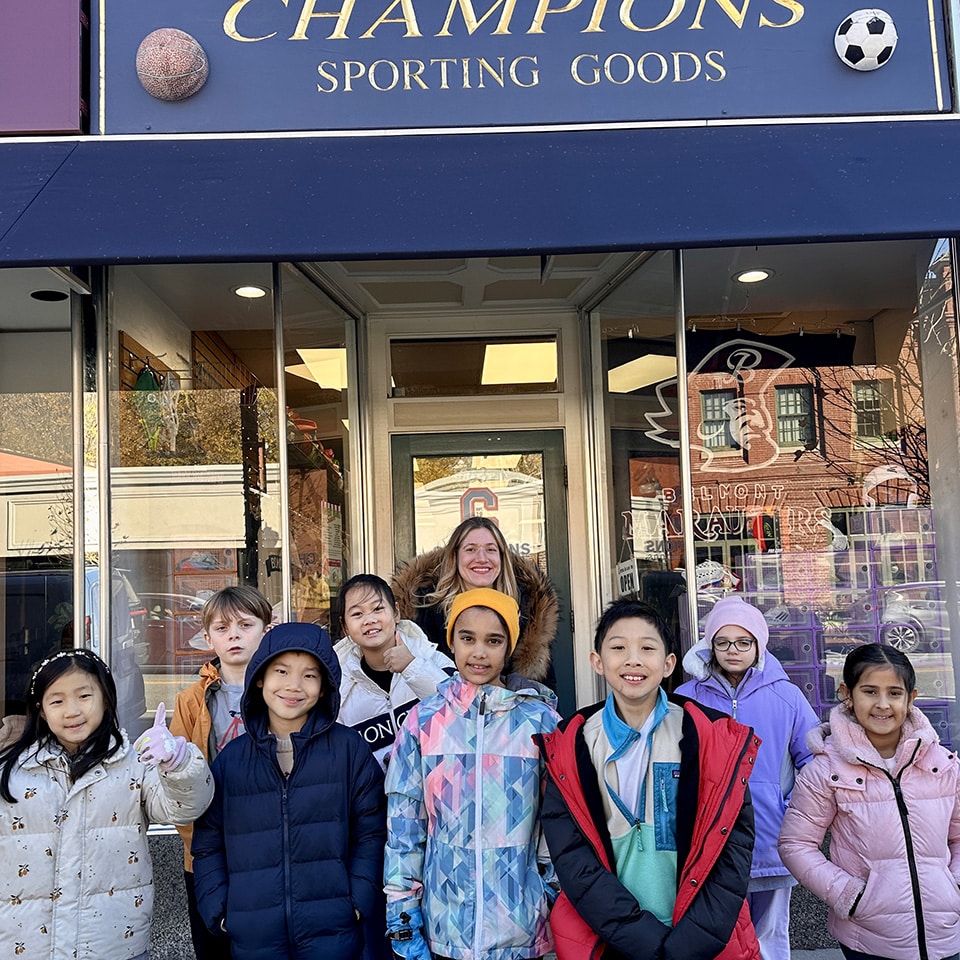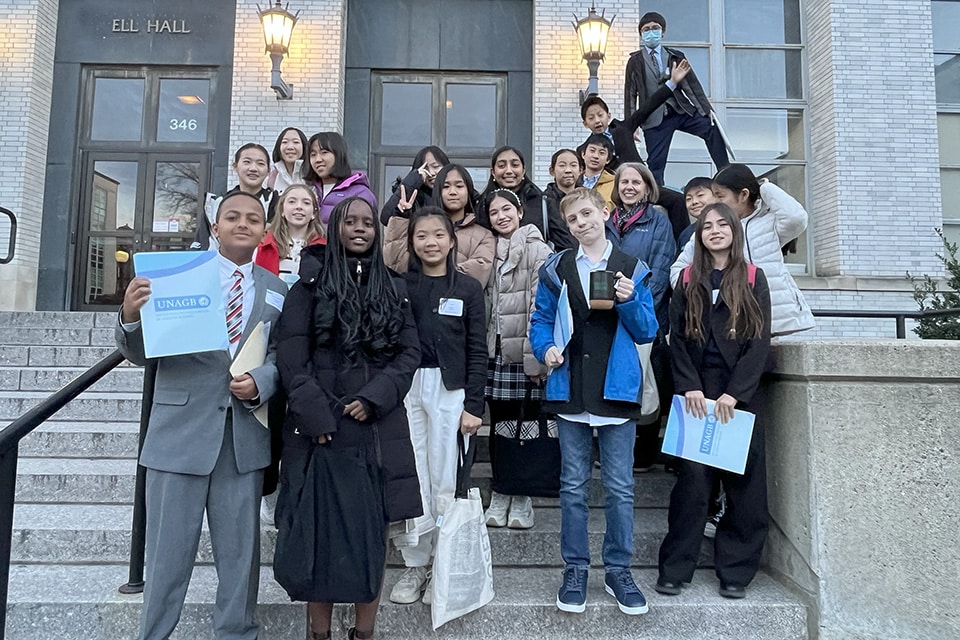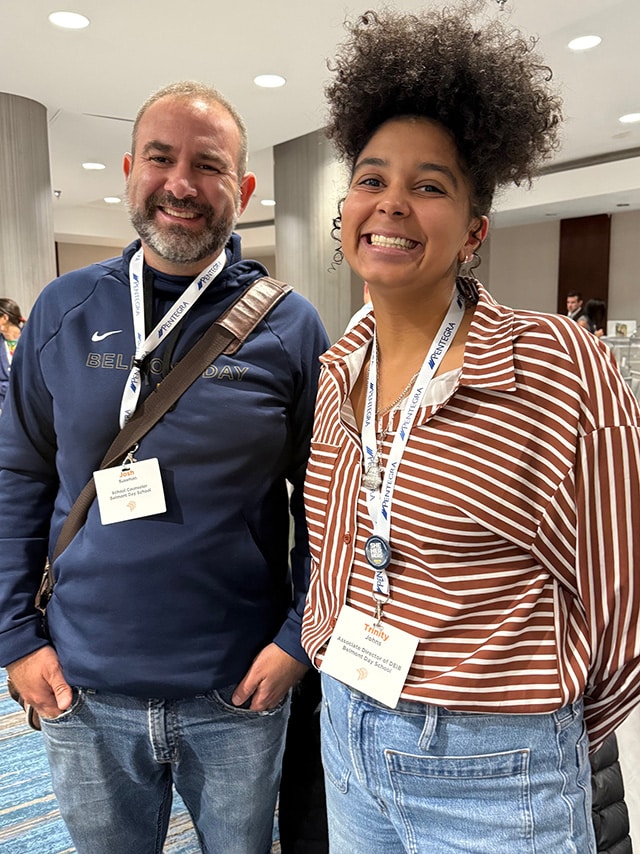Down to the Cellular Level in Seventh Grade Science
Cells are considered the basic units of life which is where seventh grade begins their year of science. For the first significant science lab of the year, students are learning how to use microscopes while also taking a closer look at animal cells and plant cells. Students will swab their own cheeks and examine them under the microscope for animal cells. For plant cells, students will use onion cells. Students will practice creating their own slides, get more experience using the microscope, and compare and contrast animal and plant cells.
– Maggie Small, seventh grade science teacher
First Grade Explore Identity Through Self Portraits
First graders recently completed their self portraits to mark our beginning of the year identity work. First graders discussed what a self portrait is and what they need to include: their face, neck and shoulders, hair, details of their face such as nose, eyes, ears, glasses, freckles, and skin color. They used mirrors to examine the details of their faces more closely. After thoughtfully sketching their heads and shoulders, first graders added their eyes, noses, mouths, and ears. They then experimented with skin color paints to mix and best match their own skin color. Students learned that skin color is determined by three factors: melanin, the sun, and where our ancestors lived. First graders discussed how we are all different shades of brown, and how our skin color is something that makes us special and unique.
After mixing and adding skin color to their portraits, as well as hair color, eyebrows, and eye color, first graders engaged in naming their skin color. Some examples were bronze, chocolate, peanut butter, peach, terra cotta, honey peach, and crispy cookie. Along their journey, students discussed how each part of their self portrait makes them special and unique!
– Geoffrey Fox and Cicely Gibson, first grade teachers
Arts Update: Third Graders Create Scenery for Upcoming Play
Third graders have been very busy in the theater, classrooms, and in the art studios preparing for Tweet!, their upcoming play. While learning their lines, rehearsing in the PAC, and practicing their songs, students have also been busy in the Coolidge Art Studio creating scenery for the first play of the school year. Last week in art class, students learned about the director’s vision for the stage production, and “visually brainstormed,” or sketched their ideas for scenery. In art class, students are now turning those ideas into the scenery and set pieces for Tweet! We are all looking forward to Friday, October 20 to share all of the students’ work showcased on stage in the PAC.
– Anne Armstrong, visual arts teacher and arts coordinator
PE Update: Seating ‘Hot Spots’ Are All The Rage
As physical education teachers we have noticed that people carry certain associations with our teaching space. When they enter it is set up for action and it is no surprise that energy levels spike when students arrive to class. After a warm-up activity it is often necessary to have students sit and listen for a couple minutes so they know what all those action items are going to be used for. This can lend itself to a degree of “squirreliness” (the technical term).
For that reason, this week our kindergartners piloted a new seating option in PE. When they arrived to class they sat on wobbly balance boards that made sitting and listening an active endeavor that engaged their cores (and their executive functioning as well). The next day when they arrived to class and the hot spots were not present, many curious voices wondered where they were, a sign that this seating option was a welcome choice. As we sometimes say to our students, you can’t achieve inner balance without achieving outer balance, and we look forward to rolling out this balancing act in other grades to help channel more “squirreliness” into productive wobbling.
– Alex Tzelnic and Abbey Nyland, physical education teachers
